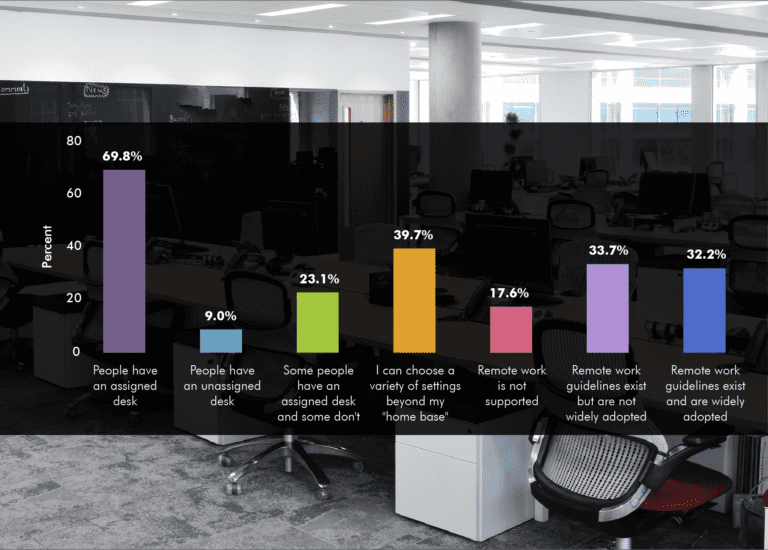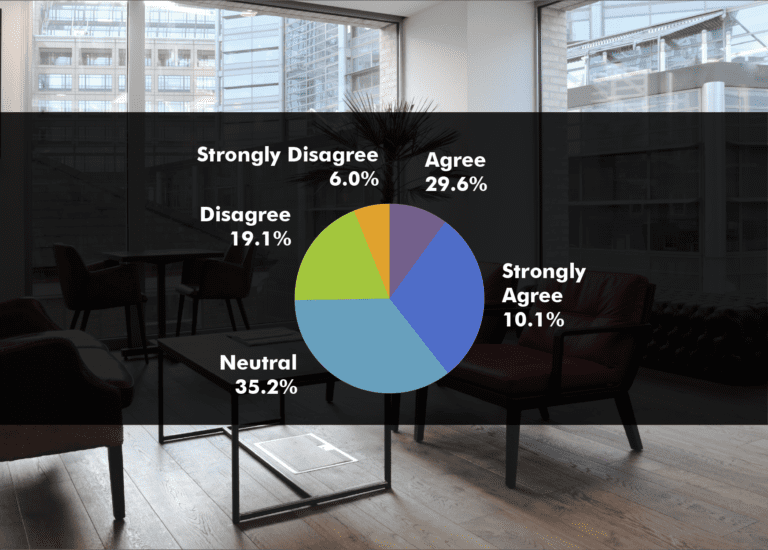More...
By Christine Kenline | Workplace Strategist
January 10, 2017
HOW AUTONOMY AND RESILIENCE CONTINUE TO IMPACT THE WORKPLACE ECOSYSTEM AND THE WAY WE WORK.
The design philosophy at IA integrates qualitative and quantitative research to develop a workplace strategy that informs our design decisions. During our process, we use a systematic approach when analyzing the integrated management of people, place, processes, and culture. Because, as we like to state, data + design = positive business outcomes.
In his book Drive, Daniel H. Pink suggests that there is a gap between what science knows and what businesses do. We believe that workplace strategy can help fill this gap for organizations looking to better understand the ever-changing workplace ecosystem. By analyzing the interconnected network of macro environmental factors—social, political, economic, and technological or what I’m calling “climates” in the workplace, we can better predict the future of work and provide more aligned, strategic recommendations and design solutions uniquely tailored to clients.
Defining what we see for 2017, autonomy and resilience will be two of the driving forces of change to the social, political, economic, and technological climates and their inherent impact on the workplace ecosystem.
We are living in a world that is continuing to change at an exponential rate. Resilience, or the ability to “bounce back” from setbacks and be adaptable to change, has not only become an area of influence on the macro, organizational level but on the micro, individual level. People are taking work more personally and, now that the line between work and personal life is blurred, we are emotionally connected to our work, causing it to affect us in a much deeper, more intrinsic manner. Because of this emotional connection to our work, we want the independence or freedom to control all aspects of our lives, no longer just our personal time. We want autonomy—or at least some level of it.
So how does autonomy and resilience affect our place of work? There are various autonomous models that have erupted as trends in the workplace over the past few years. We’ve seen management of space where activity-based design gives us the freedom, or autonomy, to choose the type of space that best fits the task(s) at hand. We have helped support autonomous processes in results-oriented work environments, where you are focused on the end goal—how you get there doesn’t matter. Moreover, how organizations manage people has been transitioning from the hierarchical model to adhocracy, even holacracy, by integrating a flatter, more informal organizational structure.
Resilience in the workplace has impacted our lives as we continue to manage disruptions and accept constant change as an integrated part of our lives. We are focusing on providing balance in the workplace—especially around focus and collaboration, where determining the right allocation of these spaces is key to organizational success. We applaud company mantras such as IDEO’s slogan “Fail often in order to succeed sooner,” where failure-tolerance is on the rise so as not to suppress our right-brain characteristics. According to author Pink, “right-brainers will rule the future.” The agile work process emerged from the “fail often” concept to support where, when, and how people want to work, to maximize productivity and innovation.
This focus on resiliency around people has also shifted our focus on sustainable building systems to highlight personal wellbeing. In a sea of change that supports this theme of autonomy, people are viewed as the highest asset within a company. The WELL Building Certification program is a strong example of the shift in focus to people and their health and wellbeing, bridging the gap between human success and a resilient environment.
In conclusion, we are shifting from external influencers driving us as a society to a cultural model of autonomy or self-governing and resiliency or self-efficacy. The key word here is self; we are making changes from the inside out.
Like What You See?
Learn more about IA's approach to strategy! Click below to read "Strategy in 2018: Here Comes GenZ!"
Making changes from the inside out.




